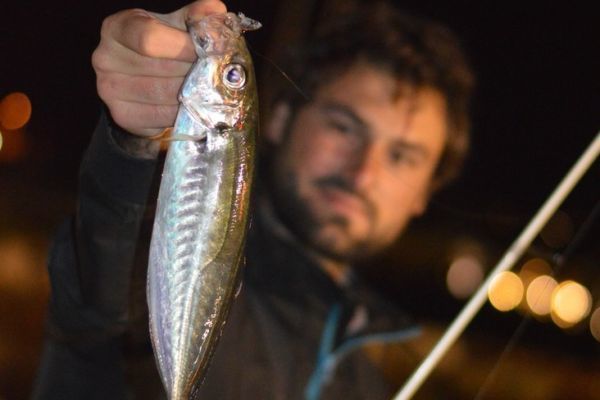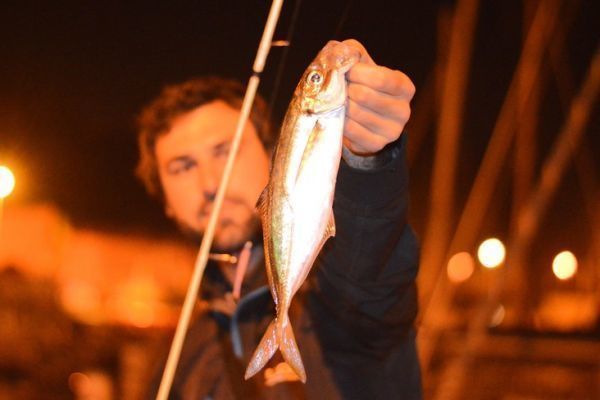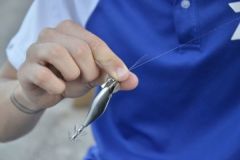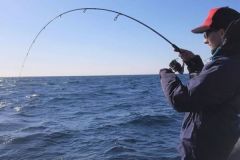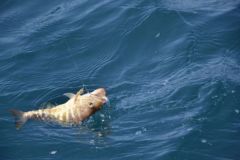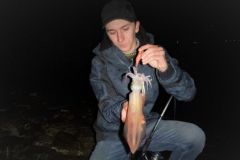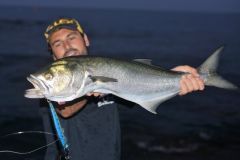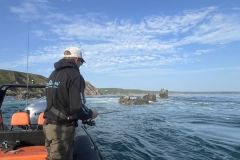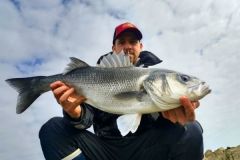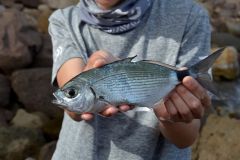Fishing for horse mackerel with light tackle requires methodical prospecting to get the right bites. Let's take a look at how to get the most bites from this little caranguid!
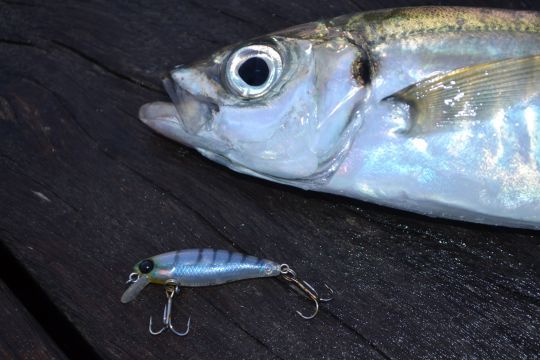
Japanese-style aji fishing
Once you've arrived in port and taken the usual precautions, you can start fishing. If you hear chasing (horse mackerel suck in their prey and you can often hear their noisy aspirations when chasing on the surface...), that's perfect. Go for it! Otherwise, you'll have to methodically prospect the entire layer of water between the bottom and the surface with a soft lure. Horse mackerel is a pelagic fish and is sometimes close to the bottom or sometimes just below the surface.
It's not very complicated, don't worry. Cast your lure, checking beforehand that there is no line crossing the trajectory of your lure... Let your lure sink to the bottom, keeping contact with the sinker. Once at the bottom, pull the lure up using twitch and short pulls, with light tugs, over a variable water height, to find the right depth for holding chinchards. Between the twitch animation phases, 5 to 8 scion strokes, let your lure sink slowly by accompanying it and keeping the banner semi-taut, so as to let the lure sink very gently and feel the most fleeting touches. It's often during this descent phase that the horse mackerel sucks in the lure.
The twitching action produces large lateral deviations, enabling the horse mackerel to spot its prey and imitate a small, destabilized fish. The slow descent phase, where the lure is suspended, allows the horse mackerel to easily suck in its prey, which is then offered to it. If the lure doesn't land, repeat this pattern, which is the most effective, until you find fish. If horse mackerel are active at shallow depths (less than 1.5 m), you may prefer to fish with a swimmer. Equip yourself with a small minnow and, here again, use fairly nervous animations, interspersed with controlled stops and pauses.
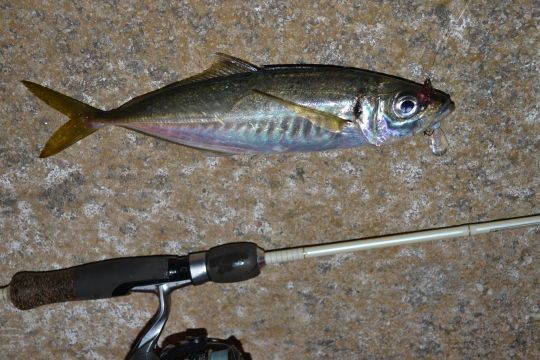
The touch is often very subtle, you'll feel a little knock or sometimes just a little suction, and even then, only if your rod is very sensitive. Then gently squeeze with your wrist without too much amplitude, so as not to tear the mouth membrane of this little fighter. Then you'll realize that horse mackerel is a hell of a fighter for its size.
Rushes can be quite long and fast, and this is all the more true as your reel's drag should be very light. Just counter and set the rod in opposition so that it does its job of cushioning the rod with the full tip. Once the horse mackerel is at your feet, it's best to remove it from the water using a long-handled landing net to avoid straining the jaw.
Handle the horse mackerel with care and don't hesitate to release this worthy adversary back into his element. Relaunch where you made your capture. As horse mackerel are gregarious by nature and hunt in small groups, there's a good chance they'll lure other fish.
Lures and fixtures
The basic rig used by the Japanese for stalking horse mackerel consists of a soft, thread-like micro lure mounted on a very light lead head. Personally, I prefer lead heads weighing between 1 and 3.5 grams with a pointed shape. The weight is dictated by the depth of the site fished, the strength of the wind and current and the size of the lure. The more these parameters tend to increase, the heavier the weight of the sinker should be. The pointed shape of the head will accentuate the amplitude of your lure's twitching action during twitch animation.
The hook should be extremely sharp, pointed and small (no. 10 to 6). I use a hook file to ensure maximum sharpness at all times. This way, when the horse mackerel sucks in the lure, the slightest flick of the wrist as a strike allows the hook point to subtly penetrate our game partner's fragile mouth without tearing.
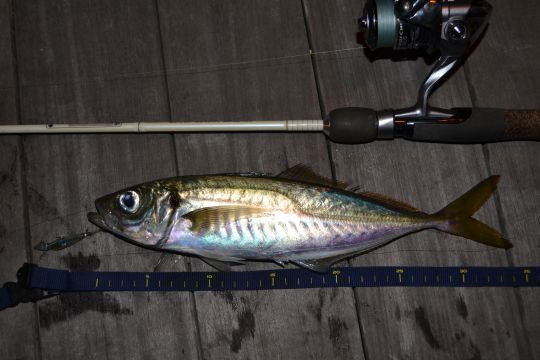
As far as lures are concerned, I use soft 3 to 7 cm shad or pintail-type lures moulded in a very supple material and with a fairly long shape, to encourage movement even with minimalist animations and to allow the horse mackerel to suck the lure in perfectly. As for colors, all without exception can be good. The most classic colors are fluorescent and white, which are easy to spot at night. Pink is particularly good, as it contrasts well with the blue of the water and makes you think of a small shrimp.
Don't forget to use natural or even transparent colors. Horse mackerel are sometimes very selective and fussy, and will only bite on subtle, discreet colors. I love transparent glitter colors, even if they're very difficult for us to see in the water at night. Don't underestimate the fish's ability to perceive the lure, even if it's completely invisible to you.
As for hard lures, small minnows or jerkbaits (4 to 6 cm) imitating shrimp or fry are perfect. I use either suspending or sinking models. The advantage of sinking swimbaits is that they're denser, so you can cast further (on a hunt, for example) and fish deeper than with a suspending lure. Once again, when it comes to colors, opt for bright, natural ones, especially under streetlights.

 /
/ 

